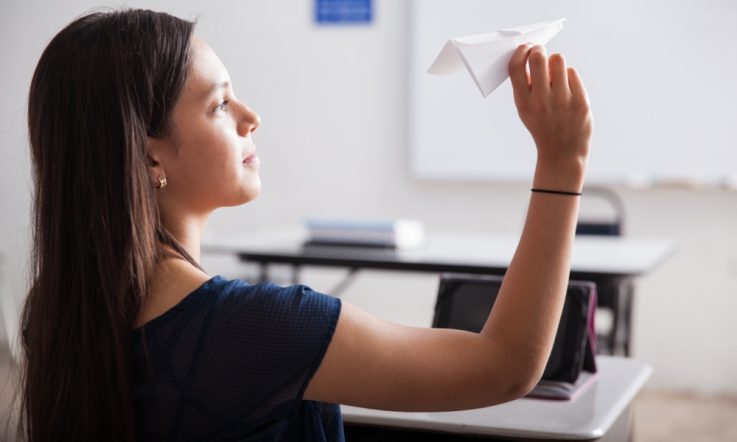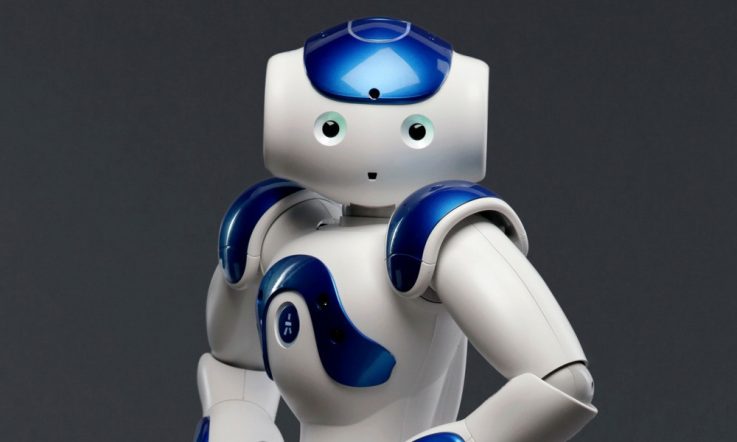Hello, thanks for downloading this podcast from Teacher magazine – I'm Jo Earp.
Welcome to part one of a two part Teaching Methods podcast on Engineering and the Engineering Design Process. My guest is Lyn English, Professor in STEM Education at the Queensland University of Technology and a presenter at this year's ACER Research Conference. In this first episode she talks about the importance of Engineering in the primary years and some of the resources out there to support teachers. Remember to stay tuned for Episode 2 next month, where we'll be exploring the Engineering Design Process learning framework.
Jo Earp: Professor Lyn English, welcome to Teacher magazine.
Lyn English: Thank you very much Jo, it's very nice to be here.
JE: Now, we're here at the ACER Research Conference 2016 and the theme is STEM learning, improving STEM learning. My first question is, of all the STEM disciplines then Engineering has perhaps, I think it's fair to say, has received the least attention in terms of school focus. Why do you think that is?
LE: It does concern me. I think because there's a discipline war going on, from what I've gathered over recent months. I think the Science educators feel they cover engineering – they might not like me saying this but I'm not alone in this view. The Science people feel they've covered Engineering and the Technology people to a certain extent, think that they also do design as well because design has been in the curriculum for a while. But Engineering is a unique discipline. It's a discipline in its own right but it also links across disciplines. So, I think that it has been left out because the other subject areas, particularly Science, feel they've covered it already.
JE: Now, most people would probably associate the topic of engineering I guess with secondary schools. But why is that important in a primary school context then?
LE: Well, young children are natural engineers. They're very creative, they can follow directions, they naturally want to learn about their environment, they are very curious. They'll explore, they'll build, they'll construct and that's all part of engineering.
My colleague, Andrew King, has written a series of (he's on his third book now) lovely Engibear books and there's also Engilina – a female engineer – coming in. This introduces students to engineering but also linking it across the STEM disciplines. It talks about design processes, what engineers do …
JE: That's Engibear?
LE: Yes, Engibear's Dream – now Andrew King, he's an environmental chemical engineer, I've been working with him, advising him, reading drafts and so on; it's beautifully illustrated by Ben Johnston. Now, this is the first one, Engibear's Dream – he's used it with very young children, I've used it with children in my research from Grade 4 right through to Grade 6 and it provides a lovely context for them. … And initially people say, oh these are beautiful picture books, story books, but they're not going to appeal to our older students. They do, from my experience and I've done it with a range of classes.
JE: I'm thinking to myself, what would you say to those teachers listening, primary and secondary (we've touched on primary there but also secondary) who want to engage their students in this area, who want to engage them in Engineering – that aspect of STEM that we've talked about as underrepresented – but maybe they just don't feel comfortable with the subject area and the content knowledge. What would you say to those teachers?
LE: I can understand that, but with the activities that we do – it does draw upon their science and their mathematics. So, if they've got a knowledge of the science and mathematics they can link that, bring those into the engineering projects. And some of the core engineering concepts, well the resources on engineering available on the web are amazing. They stem from the US because that's where a lot of the work is being done, but I look at for example the EGFI website, Engineers Australia have got some resources, there are plenty of resources that explain to teachers about the engineering activity, what the objectives are, the core content.
JE: What kind of activities might you be doing at early years then? Would you just suggest some block activities? Building?
LE: Yes, there's building. There's a website on it called PictureSTEM. My colleagues at Purdue University, and if you look up on the web PictureSTEM you'll see a whole range of activities there where they're doing K (which is four-year-olds), through to eight-year-olds – where they are linking the STEM disciplines and Engineering.
For example, one [activity] might be weaving, making baskets – exploring materials, looking at dimensions of baskets. So, they've got a task where they've got to create a basket that's got to hold an Easter egg, or whatever it might be. And they've got certain materials. It's got to be a strong basket, they look at the weaving patterns, they look at shape of it – how are they going to put the [net] together? Will it be waterproof, if we dropped it into the pond?
… The Boston Museum – they've been doing early engineering programs. There are lots of examples where young students in pre-school, prep … … In kindergarten, just observing how they work with the blocks, they can build little cities, all of that is involved with Engineering.
But I think, what it is, we haven't really appreciated the engineering aspect of what young children can do. And when we're aware of that, we can see just how we can facilitate that development to make them more aware of the materials they're using, how they fit together, the strength, even the aesthetics – is it appealing?
… And I forgot to mention, a key thing of the early engineering is literature. Not just like Engibears books, but story books. What I do in my Maths and in my Engineering is I link it to Literacy … where we have stories that actually address some issues pertaining to engineering or even a story that lends itself to an engineering context. So, the students can identify: What were some of the problems that were faced in this story? How might we go about solving that problem?
And so literature is an important basis for the work they're doing at Purdue University in early engineering. They're really not only linking the STEM disciplines, but bringing in the importance of Literacy as well.
With my engineering work we develop detailed teacher booklets with the background information, the core objectives, how this addresses the Science curriculum, the Technology curriculum, the core concepts and how they link those. We address the engineering ideas, we give them extra resources – videos, links to go to.
So, there's plenty of material available and teachers shouldn't be afraid of Engineering because, one of the beauties of it is it links, draws upon the Mathematics and the Science learning to solve a real-world engineering-based problem.
JE: So, don't be frightened, is the message.
Professor Lyn English there, talking about some of the resources available to educators to support STEM learning, and in particular Engineering. That's all for this episode, stay tuned for Part 2 when we'll be exploring the Engineering Design Process learning framework. For links to the resources mentioned in this podcast, and details of how to subscribe to all our podcasts for free on SoundCloud and iTunes just head to www.teachermagazine.com.au
How are you covering Engineering concepts in the classroom? Do you use hands-on activities that allow students to solve real problems?
Professor Lyn English says literature is a key part of Engineering in the early years. When choosing class story books, do you think about how the themes link to other subject areas?



